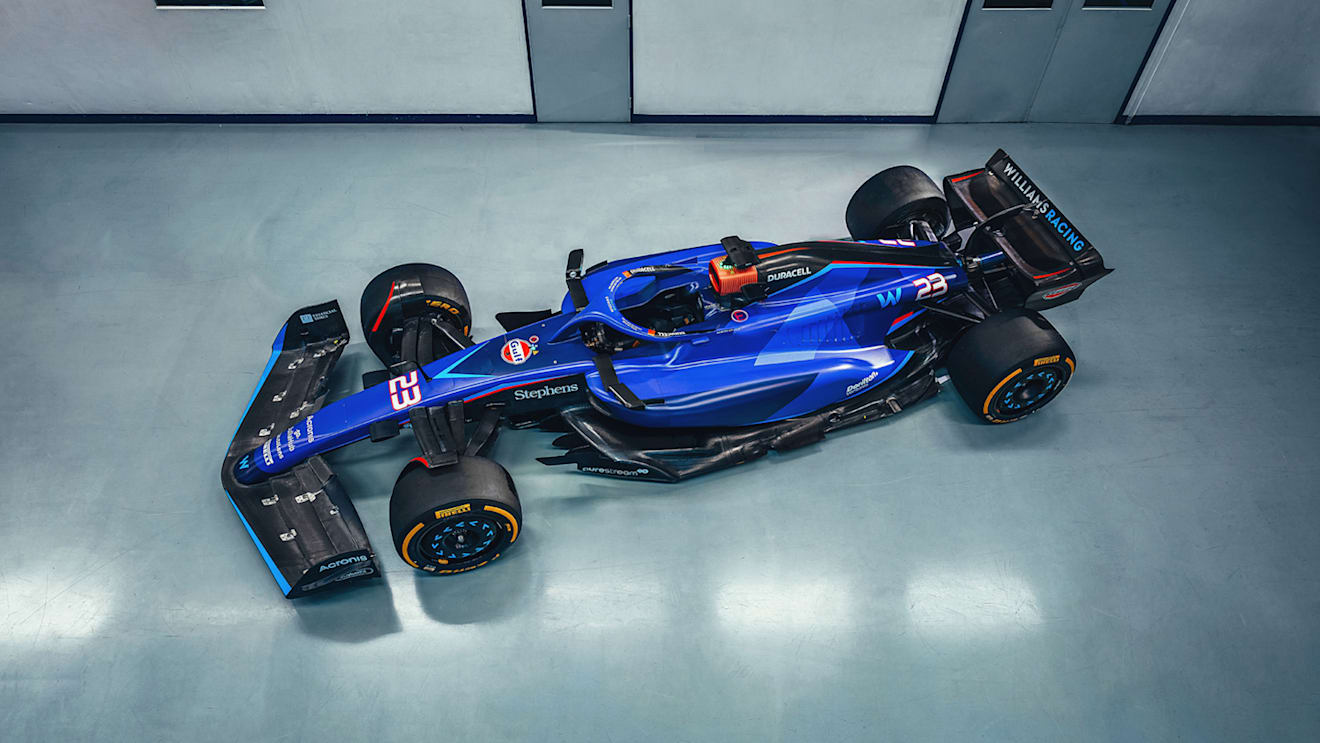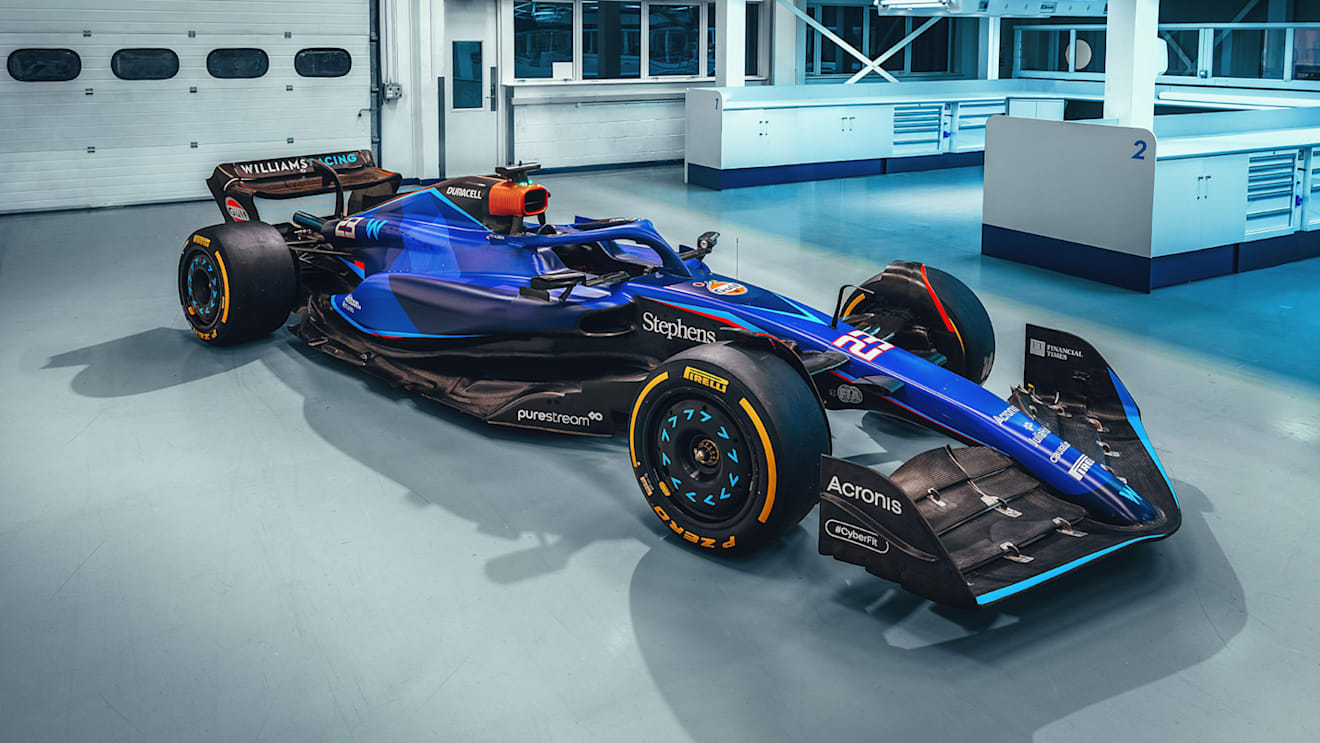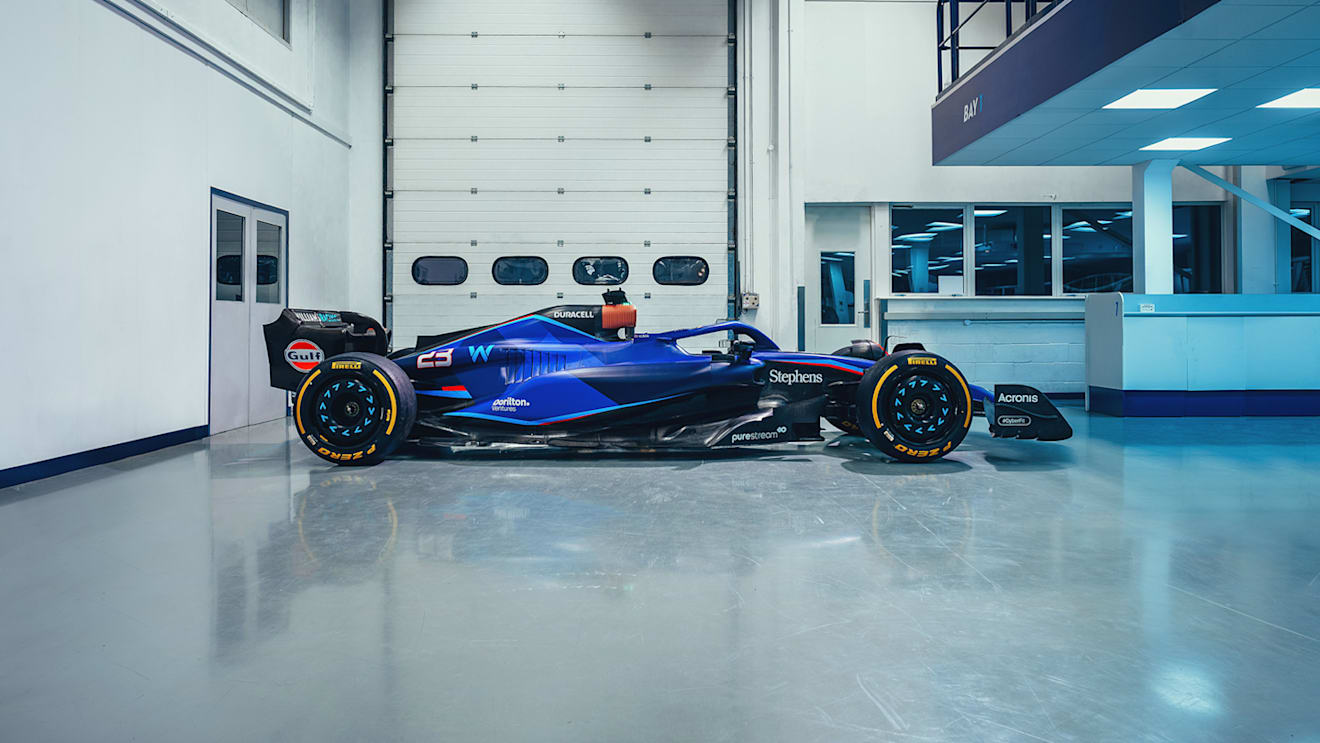
Technical
TECH ANALYSIS: Williams continue Red Bull-like trend with FW45 design

Share

After Williams shook down their new FW45 car at Silverstone on Monday, F1 technical export Mark Hughes had a look at the details – and noticed that a trend seems to be emerging...
The official photographs released by Williams today of their new FW45 – the real car, not a computer render – conform to a trend we are seeing of teams re-arranging their radiator packaging, with less in the front of the sidepods and more up around the shoulder area. Alfa Romeo, Haas and now Williams have all done this with their 2023 cars.
It can be seen that the front corners of the sidepods in plan view are now slimmer while from side-on we can now see a clear Red Bull-like bodywork ‘cannon’ for the cooling air from the shoulders, exiting either side of the central exhaust at the rear. In general, it looks like a convergence towards what Red Bull did in 2022.
ANALYSIS: Why AlphaTauri’s livery launch gave us some fascinating clues about the AT04
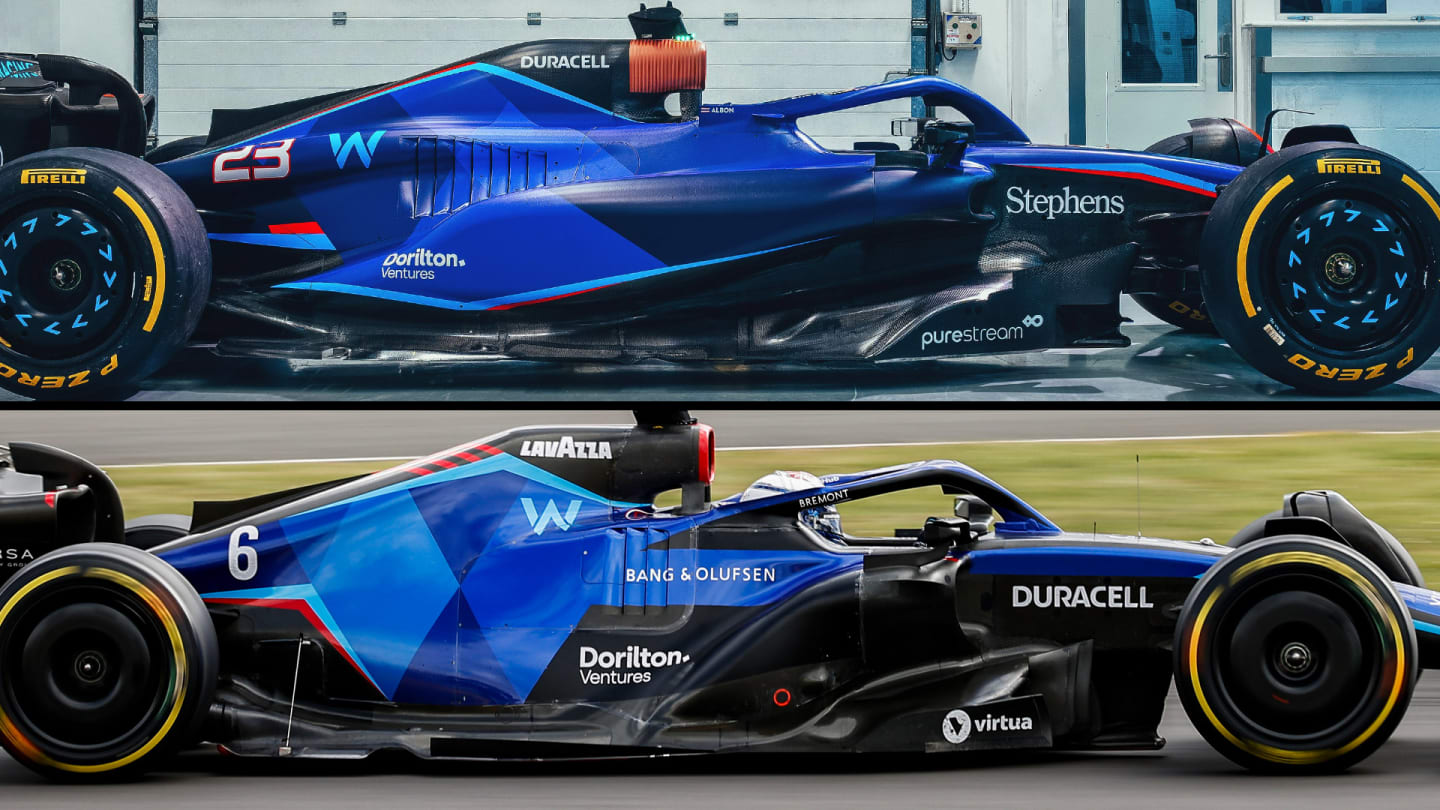
FW44 (bottom) and FW45 (top) views from side-on suggest that the floor inlets at the lower front of the sidepod have been given more space in which to fit. The bodywork ‘cannon’ along the side of the engine cover defining the cooling route to the rear outlets confirms the re-siting of radiator area from the front of the sidepod to the shoulders.
Last year when Williams introduced the heavily revised version of the FW44 at the British Grand Prix, engineering chief Dave Robson said that ideally they would have liked to have re-arranged the radiators as well as the bodywork, but that it was not feasible within the cost cap constraints. It looks like those changes have now been made.
The aim seems to be to create the space around the front of the sidepods to move the inlets for the underfloor slightly further back. Although this shortens the length of the downforce-creating underfloor tunnels, it moves the car’s centre of aerodynamic pressure further back.
This has been deemed desirable by many teams who last year found that the more forward centre of pressure gave them a car which, combined with the very powerful underfloor, gave a very inconsistent balance through the corners.
ANALYSIS: It’s all change at Williams in 2023 – but can they change their fortunes on track?
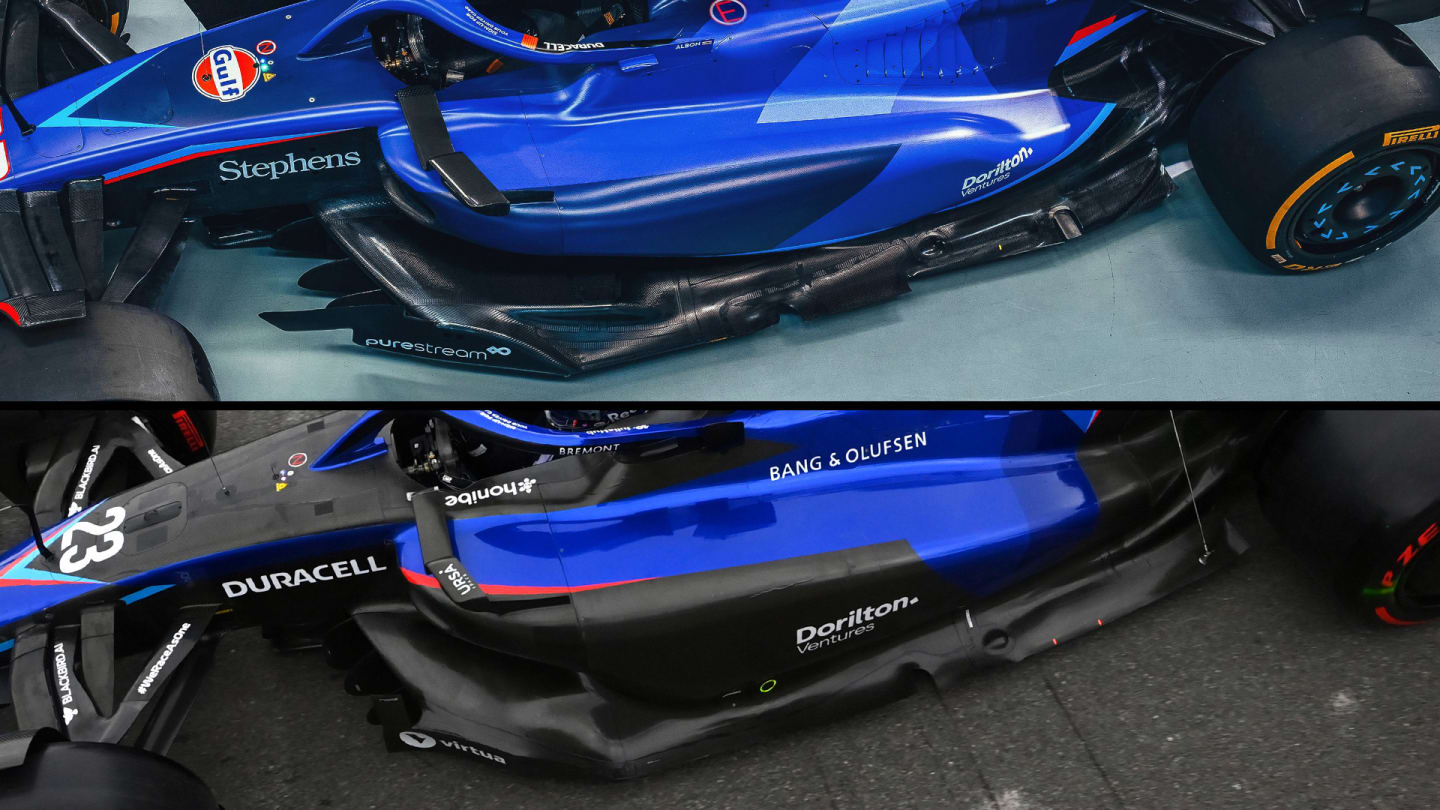
FW44 (bottom) and FW45 (top) show how the outer top corners of the sidepods have been pared back as a result of re-siting some of the radiator core beneath the bodywork.
Typically, it could be unstable at the rear upon corner entry but then understeering by mid corner. This was particularly so with the Williams, even in its upgraded post-Silverstone form.
Slimming the lower front of the sidepods down by moving radiator area away from there to further up the car creates the space to allow the inlet tunnels for the floor to be shaped in a way more sympathetic to keeping a consistent aerodynamic balance.
This looks to be the foundation upon which Williams will strive in 2023 to reduce its performance deficit to the front.
1 / 3
YOU MIGHT ALSO LIKE

Video WEEKEND WARM-UP: McLaren take on Red Bull in a scorching hot Bahrain while Ferrari run upgrades in a bid to join the party
News ‘We are not as far as it seems’ – Sainz reflects on process of adapting to Williams as he singles out ‘biggest change’
Podcast F1 EXPLAINS: Ask an F1 Team Principal with Williams boss James Vowles
News Verstappen says Red Bull ‘definitely need to improve’ if they are to fight for 2025 titles

